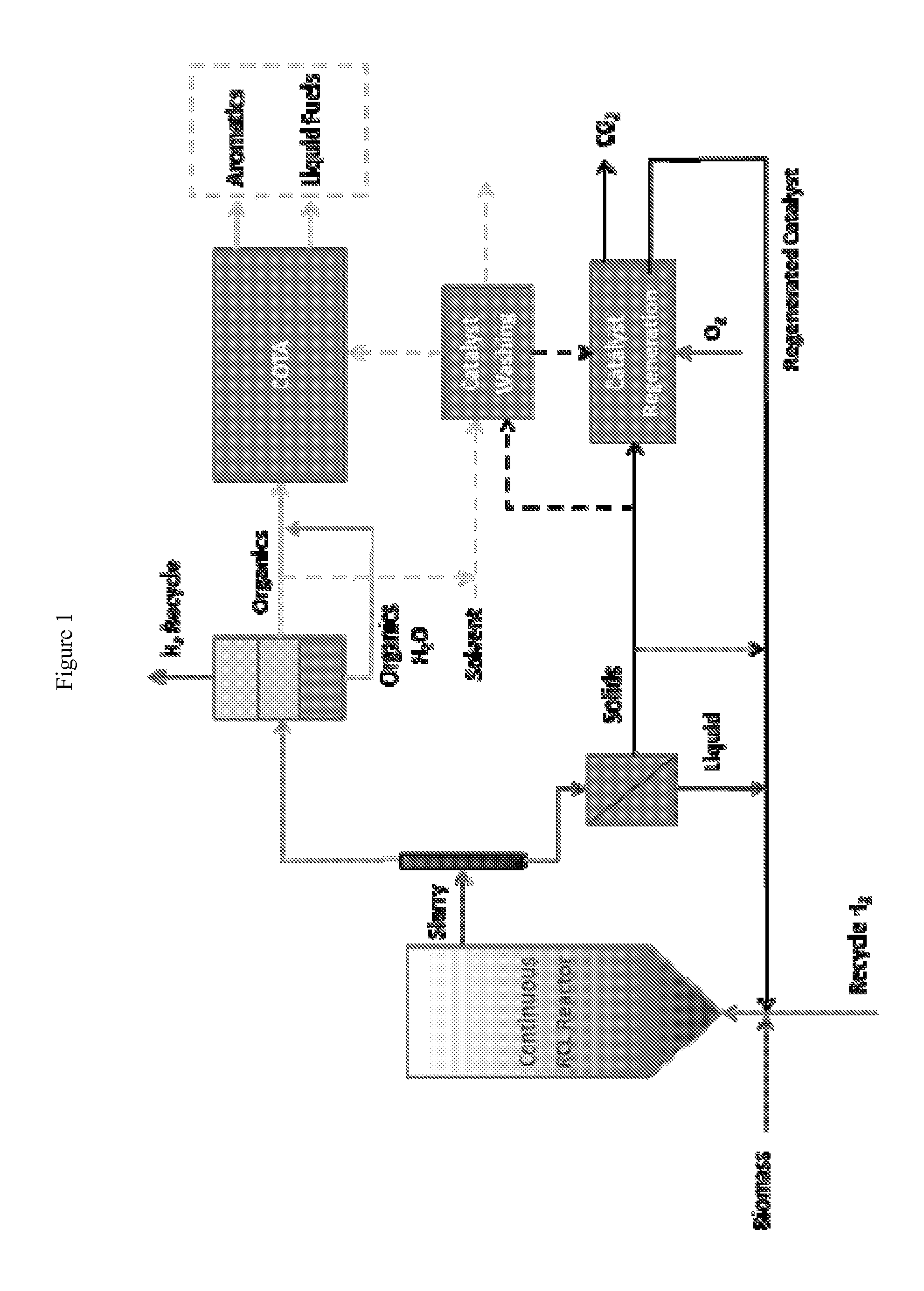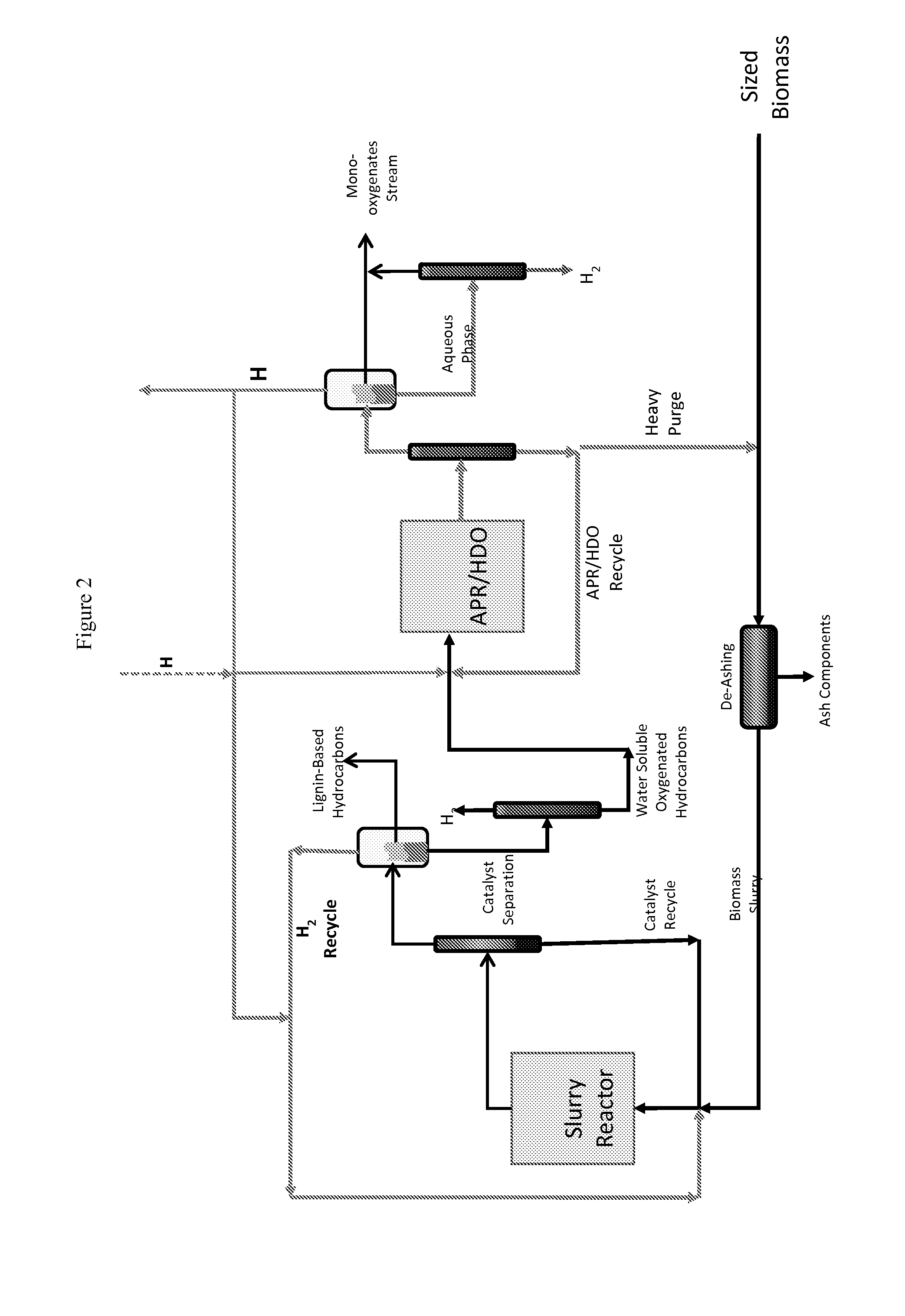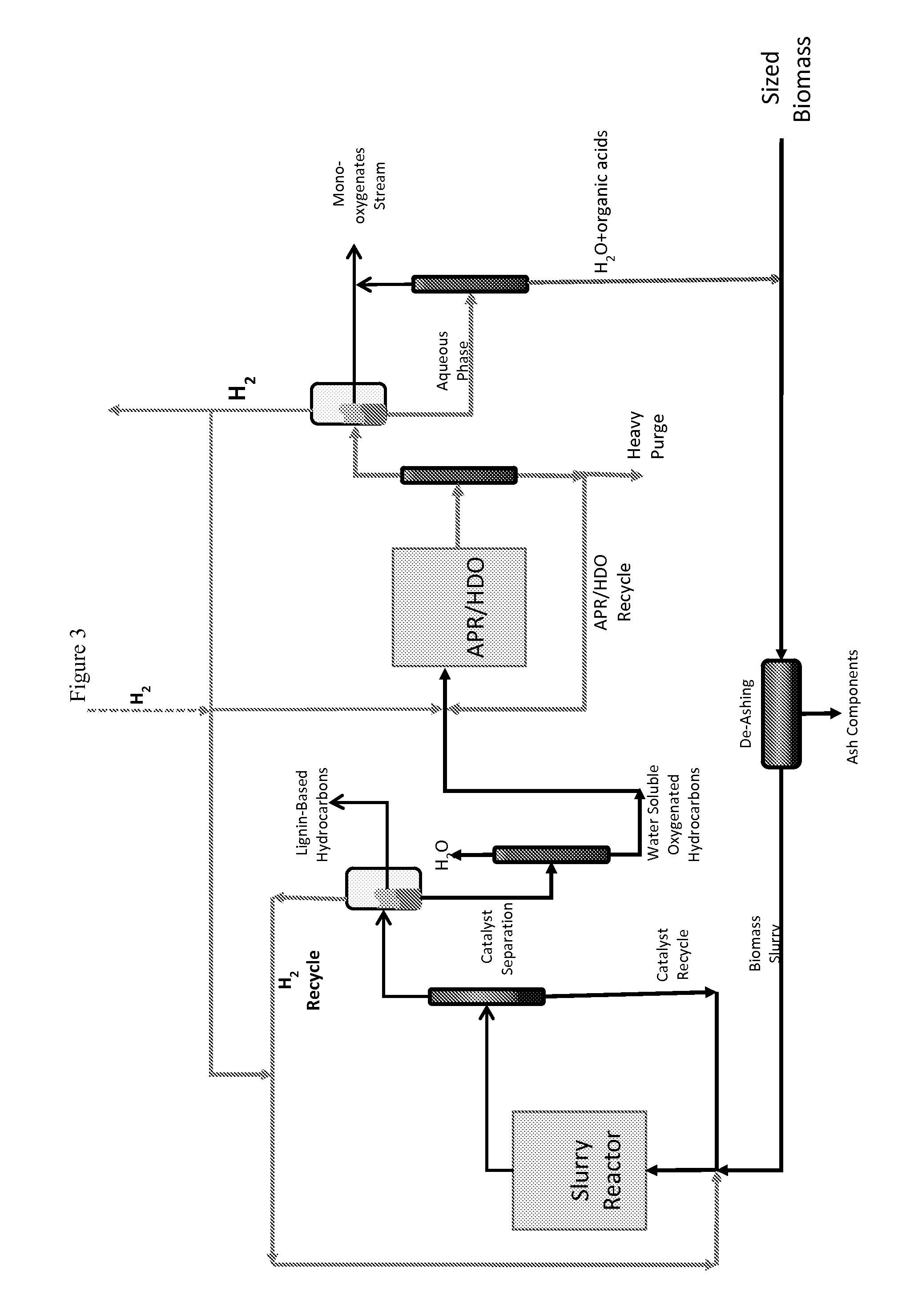Reductive Biomass Liquefaction
a biomass and liquefaction technology, applied in the direction of metal/metal-oxide/metal-hydroxide catalyst, hydrocarbon from oxygen organic compounds, purification/separation of oxygen compounds, etc., can solve the problems of undesirable decomposition products, insufficient existing methods for converting biomass to usable feedstock, and no cost-effective process currently exists for efficiently converting primary components of biomass
- Summary
- Abstract
- Description
- Claims
- Application Information
AI Technical Summary
Benefits of technology
Problems solved by technology
Method used
Image
Examples
example 1
[0097]A heterogeneous liquefaction catalyst, 2% Pd 2% Ag on a tungstated zirconia support, was used for the liquefaction of loblolly pine to determine catalyst activity and regeneration effects. Reactor conditions were 10% (w / v) loblolly pine slurry in water, 1:3 catalyst:pine, 260° C., 1000 psi H2. A fresh catalyst sample was used for the liquefaction, the spent catalyst was then regenerated and used again. Regeneration included an organic solvent (acetone) wash, followed by several water washings to remove residual solvent and an oxidative regeneration. The oxidative regeneration conditions were as follows: 0.8° C. per minute ramp to 450° C. followed by a 16 hour hold at temperature, with a gas flow of 1000 ml / min N2 and 3% oxygen. The spent catalyst was again collected and used once more after a second regeneration. One final run was then conducted using the spent catalyst, this time without any regeneration. Results can be seen in FIGS. 4 and 5.
[0098]For pine liquefaction, the l...
example 2
[0099]A non-precious metal liquefaction catalyst (5% Ni Ni:B (1:5)) was used for the liquefaction of corn cobs for a 3 day continuous run in a slurry reactor. Reactor conditions were 5 wt % corn cob in water, 1:3 catalyst:biomass, 260° C., 1000 psi H2. Fresh catalyst was added each cycle, roughly every 10 minutes, for the first 12 hours. After 12 hours, the catalyst was recycled and fresh catalyst was added less than once per hour, or every 6 cycles. No regeneration of the catalyst occurred. The results can be seen in FIG. 6 and Table 2.
TABLE 2Speciesgrams per minuteAcetol0.201-Hexanol0.17Butanoic acid0.14Acetic acid0.13Ethylene glycol0.10Propylene glycol0.07Acetone0.04Propionic Acid0.04(R)-(−)-2-Pentanol0.03Glycerol0.02Xylitol0.021,2-Pentanediol0.02Methyl propionate0.02Lactic acid0.01Formic Acid0.01
[0100]For corn cob liquefaction, the catalyst activity remained throughout the 3 day run shown by feedstock conversion and the ability to run with such longevity. Product selectivity ove...
example 3
[0101]A heterogeneous liquefaction catalyst, 2% Pd 2% Ag on tungstated zirconia support, was used for liquefaction of microcrystalline cellulose (MCC) to determine catalyst activity and regeneration effects. Reactor conditions were 10% (w / v) MCC slurry in water, 1:3 catalyst:biomass, 260° C., 1000 psi H2. A fresh catalyst sample was used for liquefaction, then regenerated and used again. Regeneration included an organic solvent (acetone) wash, followed by several water washings to remove residual solvent and an oxidative regeneration. The oxidative regeneration conditions were as follows: 0.8° C. per minute ramp to 450° C. followed by a 16 hour hold at temperature, with a gas flow of 1000 ml / min N2 and 3% oxygen. The spent catalyst was again collected and used once more, this time without any regeneration. Results can be seen in FIGS. 7 and 8.
[0102]The activity of the liquefaction catalyst tended to remain after initial use, shown by feedstock conversion in both the regenerated cata...
PUM
 Login to View More
Login to View More Abstract
Description
Claims
Application Information
 Login to View More
Login to View More - R&D
- Intellectual Property
- Life Sciences
- Materials
- Tech Scout
- Unparalleled Data Quality
- Higher Quality Content
- 60% Fewer Hallucinations
Browse by: Latest US Patents, China's latest patents, Technical Efficacy Thesaurus, Application Domain, Technology Topic, Popular Technical Reports.
© 2025 PatSnap. All rights reserved.Legal|Privacy policy|Modern Slavery Act Transparency Statement|Sitemap|About US| Contact US: help@patsnap.com



